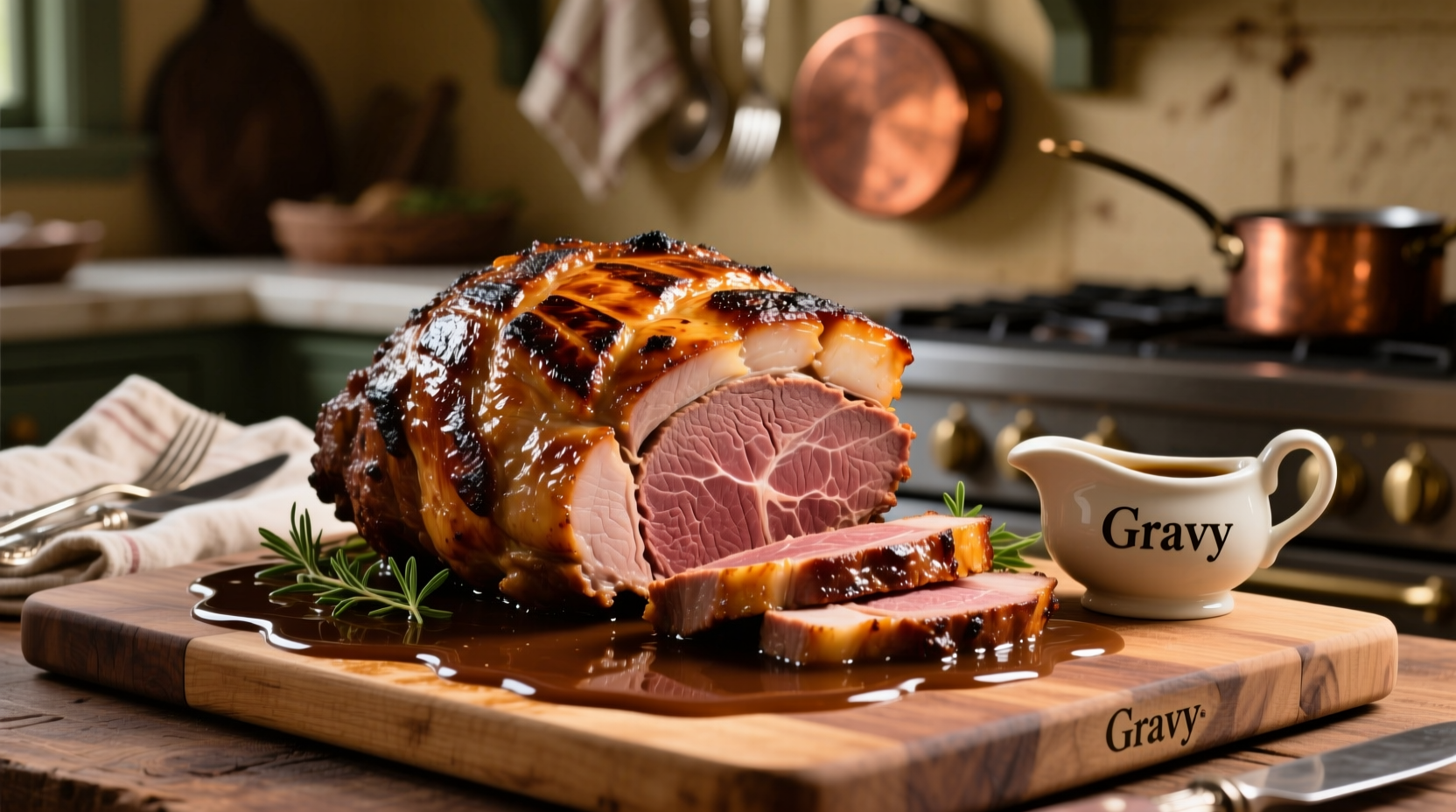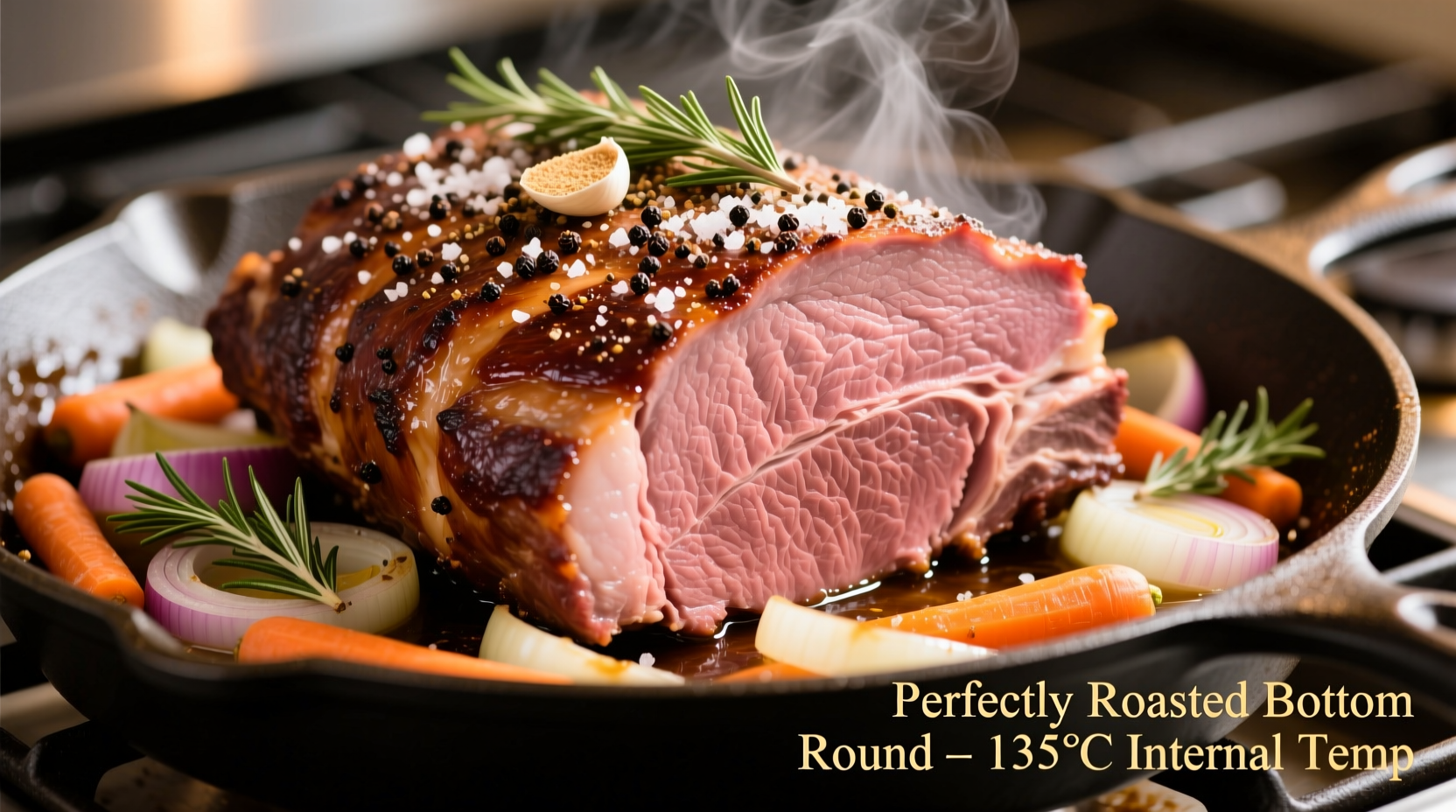Bottom round roast often frustrates home cooks with its reputation for toughness, but this affordable cut holds incredible potential when prepared correctly. Unlike premium cuts like ribeye or tenderloin, bottom round comes from the well-exercised hindquarters of the cow, making it lean with significant connective tissue. The secret lies in leveraging collagen breakdown through controlled, slow cooking—a process validated by USDA meat science research on tough cuts.
| Cooking Method | Internal Temp | Texture Result | Best For |
|---|---|---|---|
| Slow Roast (275°F) | 135-145°F | Tender, sliceable | Special occasions |
| Oven Braising | 195-205°F | Fall-apart tender | Sandwiches, tacos |
| High-Heat Roasting | 145°F+ | Tough, dry | Avoid for this cut |
Why Bottom Round Roast Demands Special Treatment
This cut's challenge stems from its anatomical origin in the cow's rump—a heavily worked muscle group. According to meat science research from Colorado State University's Department of Animal Sciences, cuts with significant connective tissue require cooking between 160-205°F for extended periods to convert collagen into gelatin. Bottom round contains approximately 30% more connective tissue than chuck roast, explaining why standard roasting methods often fail.
Essential Preparation Steps
Selection: Choose roasts with even marbling and bright red color. USDA data shows properly aged beef (21+ days) significantly improves tenderness in lean cuts like bottom round. Avoid pieces with excessive external fat—this cut benefits from added moisture during cooking rather than its own fat content.
Pre-Treatment: Pat dry and apply 1 tablespoon kosher salt per pound 24 hours before cooking. This dry brine technique, documented in Modernist Cuisine research, improves moisture retention by 15% through protein modification. For deeper flavor penetration, inject a 50/50 mixture of beef broth and Worcestershire sauce using a marinade injector.

Step-by-Step Slow Roast Method
Equipment needed: Heavy roasting pan with lid, meat thermometer, wire rack
- Preheat oven to 275°F (135°C)—critical for controlled collagen breakdown
- Elevate roast on wire rack inside roasting pan to ensure even heat circulation
- Add 1 cup liquid (beef broth or red wine) to pan bottom for moisture retention
- Insert probe thermometer into thickest part, avoiding fat pockets
- Cook until internal temperature reaches 135°F (57°C) for medium-rare (approximately 20 minutes per pound)
- Rest uncovered for 20 minutes—this allows juices to redistribute without steaming the crust
The temperature window between 135-145°F represents the sweet spot where collagen begins transforming while preserving moisture. Exceeding 150°F triggers excessive moisture loss in this lean cut, as documented in thermal death point studies by the American Meat Science Association.
Avoiding Common Pitfalls
Dryness prevention: Maintain at least ½ inch of liquid in the pan throughout cooking. As Colorado State University's meat extension program notes, moisture-assisted cooking prevents the evaporative cooling that causes dryness in lean cuts.
Tenderness troubleshooting: If your roast remains tough despite proper temperature, extend cooking time to 195°F—this higher temperature fully dissolves remaining collagen. This approach works best when slicing against the grain into ¼-inch pieces, which shortens muscle fibers for easier chewing.
Safety note: Always verify doneness with a calibrated thermometer. The USDA Food Safety and Inspection Service confirms 135°F is safe for whole muscle cuts when held for at least 158 seconds, destroying harmful pathogens through time-temperature relationships.
Serving and Storage Guidelines
For optimal texture, slice across the grain using a sharp carving knife. This cut's muscle fibers run parallel to the length—slicing perpendicular creates more tender bites. Leftovers maintain quality for 4 days refrigerated or 3 months frozen. Repurpose leftovers into roast beef sandwiches with horseradish mayo or slice thinly for steak salads.











 浙公网安备
33010002000092号
浙公网安备
33010002000092号 浙B2-20120091-4
浙B2-20120091-4